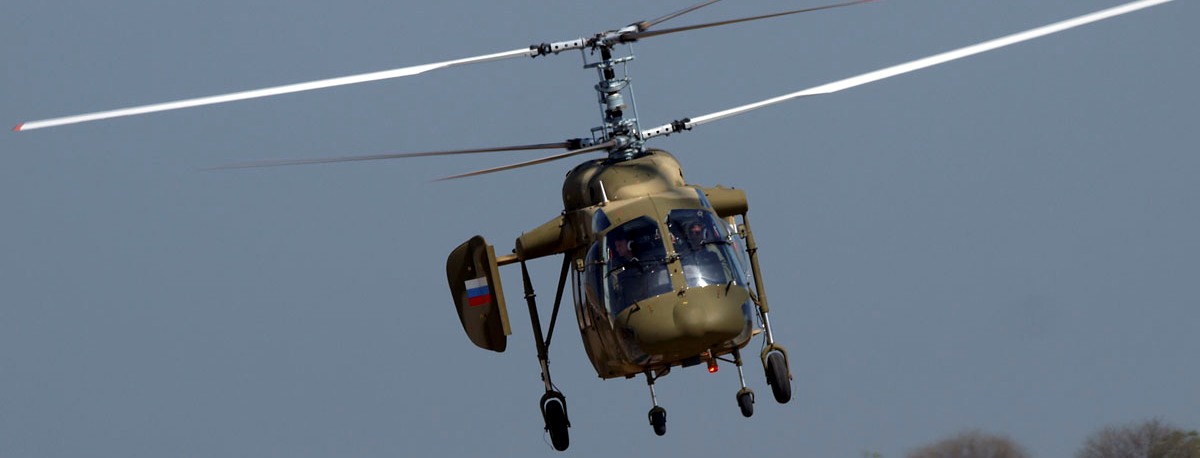
Russia used to control the Indian military helicopter market. In terms of sheer numbers, both in service and on order, that control hasn’t wavered. But the twin jolts of losing two high-value deals in direct competition with the United States — the IAF’s attack and heavy lift copter contests — weren’t easy to digest. Absorbing the blows it knows cuts it off for all real purposes from two expanding requirements (anti-armour and heavy heavy multirole logistics) across the IAF and Indian Army, Russia is looking to fight back strong. Last year it landed a surprise win with the underdog Ka-226T winning a lucrative Make in India joint venture deal with HAL that increases Russia’s footprint in the only space it has never occupied in India thus far: light utility. But with India piling on the Mi-17 orders that will only increase as requirements expand, Russian helicopters are looking to cut their losses, hold ground and fight back. Livefist interviews Russian Helicopter Co. CEO Alexander Mikheev on plans ahead for the Rostec-controlled firm that includes Mil and Kamov:
LF: With local production of the Ka-226T in India ahead, are you looking at customers beyond the Army & Air Force? Are their applications for Indian paramilitary and civil agencies that you are exploring?
AM: The Ka-226T is a light, multirole twin-engine helicopter, a modification of the Ka-226. It can transport up to seven people in the cabin, and its transport version can up to one tonne of cargo. The helicopter can fly day and night and in any weather conditions. In Russia there are about 70 Ka-226s in operation. The main operators of this helicopter are government agencies. The Ka-226T features a coaxial main rotor system and thanks to the absence of a tail rotor its operation is safe in small areas and in difficult terrain such as mountainous regions. It can be used as a medevac, search and rescue or a passenger and transport helicopter.
In India, the Ka-226Ts will transport members of the armed forces and they will be used for reconnaissance, search and rescue and sanitary missions. Given the demand for light helicopters in India that would effectively cope with tasks in the most difficult conditions, we can count on continued operation of localized Ka-226T not only by the Indian Armed Forces but also by civilian operators. Moreover, Ka-226T assembled in India can be successful not only in the Indian market but also beyond. Third countries have shown great interest in the acquisition of this machine.
LF: What other opportunities is Russian Helicopter Co looking at in India at this time with the Indian military and civil agencies?
AM: We have fulfilled the contract for the supply of 151 Mi-17V- 5 helicopters in the beginning of this year. In September 2015 the Indian government approved a purchase of another 48 helicopters of this type. The deal amounted to $ 1.1 billion, and we are expecting the contract to be signed through Rosoboronexport by the end of this year.
Currently, we are implementing a number of joint projects with our Indian partners. We are participating in a tender for the supply of an additional b atch of Mi-172 helicopters – two units. We are discussing a transition to a completely new format for after-sales service of Russian made helicopters operating in India which would support throughout the entire helicopter life cycle – from delivery to retiring. We are proposing long-term customer relationships in the field of after-sales service and turnkey service solutions that allow to agree on price and delivery terms in advance. This service reduces length of maintenance and repairs by several times, it simplifies budget management and allows to plan production of spare parts for Indian operators. We are planning to implement repairs of helicopters that are operated in India through Russian Helicopters companies as well as through service centers that are being created in India.
atch of Mi-172 helicopters – two units. We are discussing a transition to a completely new format for after-sales service of Russian made helicopters operating in India which would support throughout the entire helicopter life cycle – from delivery to retiring. We are proposing long-term customer relationships in the field of after-sales service and turnkey service solutions that allow to agree on price and delivery terms in advance. This service reduces length of maintenance and repairs by several times, it simplifies budget management and allows to plan production of spare parts for Indian operators. We are planning to implement repairs of helicopters that are operated in India through Russian Helicopters companies as well as through service centers that are being created in India.
LF: How significant was the loss of two important contests — the IAF’s new attack chopper & heavy lift chopper — that India awarded to the United States? Do you still see opportunities in India for the two types that RusHeliCo fielded?
AM: Indeed, the Indian side preferred the Apache to the Mi-28. A distinctive feature of our partner country is its strive to diversify suppliers of military products to avoid dependence on a single contractor. This is the right of our Indian partners to do that. India has always been, is currently, and hopefully will remain our strategic partner in the field of military-technical cooperation. As I have mentioned, currently we are implementing a number of major projects in the field of helicopter building. However, if new tenders are announced, we are ready to participate with our Mi-26 and Mi-28 helicopters. I want to say that when you have similar tactical, technical, flight and combat characteristics, the Mi-28 is far more affordable in terms of price and it has already been tested in combat. The existing orders on the Mi-28 and the wide geography of our deliveries serve as best evidence of this helicopter’s competitiveness.
LF: India has been on the lookout for an unmanned helicopter for years. A joint project with Israel for the NRUAV, based on the Alouette-III, has not succeeded. Your views.
AM: Outside of some technical difficulties that our Indian colleagues encountered, some very serious and complex issues had to be resolved, such as the development of an acquisition and use of drones doctrine as a whole. But over the past three years, India has seriously advanced in this direction and now relies on drones in the military and civilian sectors. This includes both buying UAVs abroad and developing own drones. India understands that the direction towards the UAV market is very promising and that the unmanned technologies are the future. I want to say that we think alike in this regard. In 2014, Russian Helicopters created a new design bureau called VR-Technologies, which is engaged in development of civilian UAVs. Our design bureau develops a unified system with unmanned helicopters that ensure the operation of UAVs with payloads from 30 to 750 kg. We do not rule out cooperation with our Indian partners in this area.
LF: The Mi-17 is India’s proven workhorse helicopter and there could be an expanded requirement. Is RusHeliCo open to building Mi-17s in India, in a similar arrangement as the Ka-226T?
AM: At the moment, we do not plan to localize the Mi-17 in India but also does not rule out such possibility in the future. Currently, our military-technical cooperation is focused on the implementation of deep industrial cooperation and joint research and development that would result in bringing high-tech products to markets of third countries. If Ka-226Ts assembled in India are successful in the markets of neighboring countries, the experience of localizing production can be used for another helicopter model, in coordination with the Indian side.
LF: What joint development opportunities does RusHeliCo see with Indian agencies like HAL and DRDO?
AM: Hindustan Aeronautics Limited is our joint venture partner to produce the Ka-226T. Therefore, in addition to the production of helicopters, we will also cooperate in the fields of developing new versions of the Ka-226T, modernizing aviation equipment and, as I said, with the consent of the parties, the founders of the joint venture, together export this helicopter to third countries. In recent years, the format of our cooperation with India reached a privileged strategic partnership status. This is detailed in implementing a number of large-scale projects – from the creation of joint ventures to equipment production to carrying out joint scientific research. This level of cooperation will eventually help form a common Russian-Indian market of military products and dual-use products, similar to what we see in Europe, and there are already a number of signs that we are moving in that direction.
(Livefist will be reporting this week from Philadelphia at Boeing’s CH-47F Chinook facility and on the company’s V-22 Osprey pitch to the Indian military)

Its a good interview, no doubt. I know that interviews are crucial part of your journalistic profession. However, I don’t think senior journalists need to go for interview publishing word by word. The audience now prefers their analysis and evaluation to come out in articles.
You are an opinion maker now..not just a fact informing journalist. I think the previous one on F/A 18 was a brilliant example.